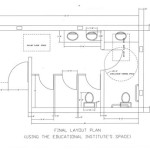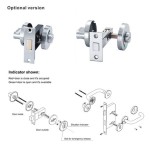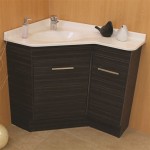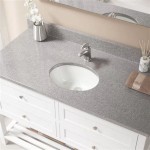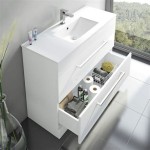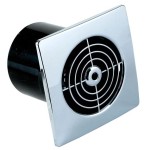Bathroom Sink Tailpiece Leak: Identification, Causes, and Repair
A bathroom sink tailpiece leak is a common plumbing issue that can lead to water damage, increased water bills, and the potential for mold growth. The tailpiece is the vertical pipe that connects the sink drain to the P-trap, the curved pipe designed to trap debris and prevent sewer gases from entering the home. Understanding the components involved, recognizing the signs of a leak, and knowing the potential causes are crucial for effective troubleshooting and repair.
The plumbing system under a bathroom sink consists of several integral parts. The sink drain assembly, often referred to as the strainer, sits within the sink basin and collects water and debris. Connected to the drain assembly is the tailpiece, a cylindrical pipe, typically made of chrome-plated brass or PVC, that extends downward. The tailpiece connects to the P-trap, which features a curved section, a U-bend, and tailpiece connecting the P-trap to the drainpipe in the wall. Washers and slip nuts are used at each connection to create a watertight seal. These seals can degrade over time, resulting in leaks that require attention.
Identifying a bathroom sink tailpiece leak often begins with noticing visible signs of water. Water pooling under the sink, dampness on the cabinet floor, or discoloration of surrounding materials are common indicators. Mineral deposits or rust around the tailpiece connections can also suggest a slow, ongoing leak. Further investigation may involve drying the area thoroughly and observing for new water droplets forming, or using a dry paper towel to check for wetness around the joints. A musty odor can also indicate a leak that has been ongoing for some time, fostering mold growth in the enclosed space beneath the sink.
Identifying the Source of the Leak
Pinpointing the exact source of a tailpiece leak is the primary step in any repair effort. Begin by visually inspecting all connections along the tailpiece, starting from the drain assembly and moving down to the P-trap. Pay close attention to the areas where the tailpiece connects to the drain and the P-trap, as these are the most common locations for leaks to occur. Examine the slip nuts and washers for signs of damage, such as cracks, deterioration, or misalignment. The presence of mineral buildup, often appearing as white or greenish deposits, can also indicate a leak. If the leak isn't immediately obvious, a process of elimination may be necessary.
One method of identifying the leak's origin involves using dry paper towels. Carefully dry each connection point along the tailpiece and then wrap a clean, dry paper towel around each joint. Run the water in the sink for a minute or two, then check the paper towels. The towel that is wet reveals the connection that's leaking. If the paper towel around the top connection remains dry, but the one around the connection to the P-trap is wet, then the lower connection is the source of the leak. Repeat the process if necessary until the leak is located.
Another technique involves using food coloring. Add a few drops of food coloring to the water in the sink and then observe the drain and tailpiece connections. If a leak is present, the colored water will start to seep out from the affected area, making it easier to identify the source. This method can be especially helpful for detecting slow, intermittent leaks that are difficult to spot otherwise. It is important to thoroughly flush the colored water after using this method to prevent staining.
Common Causes of Tailpiece Leaks
Several factors can contribute to bathroom sink tailpiece leaks. The most common culprits include loose connections, worn-out washers, and damaged or corroded tailpiece components. Over time, the slip nuts that secure the tailpiece to the drain assembly and P-trap can loosen due to vibrations or normal wear and tear. This loosening disrupts the seal, allowing water to escape. Washers, typically made of rubber or plastic, compress to create a watertight seal. These washers can dry out, crack, or become brittle over time, leading to leaks. Corrosion, particularly in metal tailpieces, can also weaken the material and create pathways for water to escape.
Improper installation of the tailpiece or drain assembly can also lead to leaks. If the tailpiece is not aligned correctly with the drain or P-trap, it can put undue stress on the connections. Similarly, overtightening the slip nuts can damage the washers, while undertightening can result in a loose seal. Using the wrong size or type of washer can also compromise the seal. In some cases, the tailpiece itself may be damaged or misshapen, preventing it from forming a proper seal with the other plumbing components.
Another potential cause of tailpiece leaks is the accumulation of debris in the P-trap. Over time, hair, soap scum, and other materials can build up in the P-trap, restricting water flow and increasing pressure on the tailpiece connections. This increased pressure can exacerbate existing leaks or create new ones. Regularly cleaning the P-trap can help prevent these types of leaks by ensuring proper drainage.
Repairing a Tailpiece Leak
Repairing a bathroom sink tailpiece leak depends on the source of the leak and the condition of the plumbing components. In many cases, a simple tightening of the slip nuts is all that is needed to stop the leak. However, if the washers are damaged or the tailpiece is corroded, replacement may be necessary. Before beginning any repair work, it is essential to shut off the water supply to the sink by turning off the shut-off valves located under the sink. Place a bucket under the P-trap to catch any water that remains in the pipes.
If the leak is due to loose connections, carefully tighten the slip nuts using a wrench. Avoid overtightening, as this can damage the washers. After tightening, turn the water supply back on and check for leaks. If the leak persists, the washers may need to be replaced. To replace the washers, loosen the slip nuts and remove the tailpiece. Examine the washers for signs of damage and replace them with new washers of the same size and type. Reassemble the tailpiece, ensuring that the washers are properly seated and the slip nuts are tightened securely.
In cases where the tailpiece itself is damaged or corroded, it will need to be replaced. Measure the length and diameter of the existing tailpiece and purchase a replacement of the same size and material. Disconnect the old tailpiece and install the new one, ensuring that it is properly aligned with the drain assembly and P-trap. Use new washers when installing the new tailpiece to ensure a watertight seal. Tighten the slip nuts securely and check for leaks after turning the water supply back on. If the drain assembly is also corroded or damaged, replacing it with a new one may be a worthwhile investment to prevent future leaks.
For more complex plumbing repairs, or if one is uncomfortable working with plumbing, consulting a qualified plumber is the right course of action. A professional plumber can quickly diagnose the problem and perform the necessary repairs safely and effectively, ensuring that the plumbing system is functioning properly and preventing future leaks. Attempting to repair a leak without the proper knowledge or tools can potentially worsen the problem and lead to more extensive damage.

Leaking Sink Tailpieces Ehow

Bathroom Sink Drain Leaking Around Threads Premier Plumbing Inc

Bathroom Sink Drain Leaking Around Threads Premier Plumbing Inc

Leaking Sink Tailpieces Ehow

Kitchen Pvc Tailpiece Leaking At Slip Nut Doityourself Com Community Forums

New Bathroom Sink Drain Leaks At Threads

Bathroom Sink Drain Leak Not Sure How To Fix Doityourself Com Community Forums
When Permanently Removing A Mechanical Bathroom Sink Stopper How Do You Prevent Water Leakage From The Hole Where Horizontal Pivot Rod Was Should Whole Tailpiece Be Replaced To Avoid This

Bathroom Sink Drain Leaking Around Threads Premier Plumbing Inc

How To Fix Bathroom Sink Drain Leaks Underneath Gasket Threads Solved
Related Posts
